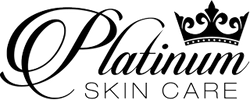Which Acid Should I Choose? | TCA | Jessners | Salicylic | Glycolic | Mandelic | Lactic
Transcript
There are so many acids out there that it can be tough choosing which one you should be using on your skin. Well, rest assured that even if you chose the “wrong” one, it will still most likely help you with your issues – because really, acids all perform the same task – dissolving the bonds that hold the dead skin to your face.
**I want to mention something here regarding the Fitzpatrick Skin Typing. This is in regards to what color skin you have, how you burn, or freckle in the sun. If you have type 4, 5 or 6
**these are the medium to darker skin types **
then you will almost ALWAYS want to prepare your skin with a melanin inhibitor before applying a higher percentage or a stronger acid. If you are unsure – error on the side of caution. A melanin inhibitor such as our Fade Bright should be applied for at least 2 weeks prior to a peel.
This will help to dramatically lessen the chances that you could get Post inflammatory hyper pigmentation after a peel. ***
If you want to learn more about preparing your skin for a chemical peel – see this video here for guidance – because you will definitely want to start using Retinol or an Acid serum daily to thin the layers of skin before you apply your peel for best results.
Key Note – When I make recommendations on how often to perform these peels, always take that with a grain of salt. If you are more sensitive, you will do a peel less often. And don’t ever worry about remembering this. All recommendations are listed in your Peel Manual.
Also, if I say 1x per week, and you are still flaking at the 7 day mark – you will need to extend your start time. Always make sure your skin is 100% done flaking before you start with a new peel.
OK?
Great, now, let’s find out which acid is best for YOUR issues.
I want to start with the milder acids and work my way up. So let’s begin with Lactic.
Lactic is considered a Very Superficial Peel. That means that it will only penetrate into the upper layers of the Stratum Corneum. We consider this a level 0 peel.
It has a very big molecule, and since it doesn’t penetrate very deep, it isn’t as irritating as other acids can be.
Our 50% is a great starter peel. If you have dry or sensitive skin, you want to start here.
Even though it doesn’t penetrate deep, it is still beneficial for pigmentation on the skin and fine lines. If you are one of those that is dealing with acne – yet has super dry skin – this acid can be for you too.
It also has a special feature of being hygroscopic. That means that lactic can actually pull moisture to your skin to hydrate it. This is more beneficial with a leave-on product, but it is still helpful in the long run.
This is a peel that you can do on a weekly basis. A series of 8 is a good starting point, but you will probably find yourself applying this for many months at a time due to the ease of usage. Stop when your skin looks great and then restart when you want to do another series.
You won’t see much of anything in the way of flaking – so this is super for those that have jobs where any “down time” needs to be minimized – but they still want to have healthy, clear beautiful skin.
The next acid I want to talk about is our Mandelic peel. This is considered a superficial peel or a level 1. It can penetrate down to the Stratum Spinosum. Don’t worry – this isn’t deep. But it is a bit deeper than the lactic acid can travel.
The absolute beauty of this acid is that it really isn’t that irritating at all! People love how easy it is to apply and how low the irritation is. Remember, there is no need to be in pain to get results. The most common description is just tingling or a very mild irritation.
We have 2 percentages available, and as with any acid – if you are unsure, always start with the milder percentage and work your way up.
Mandelic 22% can work well for those that have sensitive skin – This includes teens and tweens as well as anyone with Rosacea. Apply at least 1 full peel series of 6-8 peels before you jump up to the 40%.
For tweens and 1x application every 2 weeks works well. For adults, 1x per week is good.
If you are older, have problematic acne, or have performed other peels in the past, then you can certainly start with the 40% and should not have any problems at all. *If you have rosacea – always stay with the 22%.
As you can maybe guess – this acid is excellent for acne – and that is why I mentioned the younger crowd. It has antibacterial properties to fight pimples and will help to keep the follicles clear.
It is also excellent for those dealing with melasma, hyperpigmentation, PIH in darker skin types, and fine lines. This will give you tiny, little baby flakes. Not super obtrusive in any way.
What a super acid. This is one of my very favorites and one of the most common peels we suggest for those calling in for help for just about ANY issue.
The next acid I want to talk about is Glycolic.
This is a super common acid – and the one that got the whole “lunchtime peel” started years ago. It is water soluble, and good for any skin type. It is still considered a superficial peel like the mandelic – but it can penetrate a bit deeper due to its super tiny molecular size. This can make it a bit more irritating- though it’s not bad. Tingling to a light stinging.
Glycolic is a general acid – meaning that you can apply this for “generally” anything. LOL. Most people find it is great for minimizing those fine lines and evening-out the skin’s texture that can get rough over the years.
This one comes in 3 percentages. As always, begin with the lowest percentage – which is our 30%.
This is a really standard percentage you will find in many spas. The 30% can be applied 1x per week. *Push that back if you are sensitive* and do a series of 6-8.
After a series you can move up to the 50% if you would like to. A higher percentage will give you more flaking. Glycolic also has tiny, baby flakes that are really not bothersome at all.
We do have a 70% of this as well – but that is reserved for body peels.
The next acid I want to mention is the only beta-hydroxy acid – and that is Saliyclic
Salicylic is oil soluble. That means that it is attracted to oils and can dig super deep in your pores until it finds it. Obviously this is perfect if you have oily or congested skin.
Another benefit to the acne prone crowd is that it is antibacterial and an anti-inflammatory. It is also excellent at reducing the bumps and spots that are associated with acne.
It too is considered a superficial peel – but it definitely has a much higher irritation factor than any of the acids I have previously mentioned. This acid definitely can cause a hot-peppers feeling when applied to the skin. It will also cause more, LARGER flakes than the mandelic or glycolic.
This peel comes in 3 percentages.
The first is our 3% mini peel. This is something that can be applied to a teen with problematic acne maybe 1x per week. Some adults like to use it as a toner if they are dealing with very problematic acne. We suggest leaving it on for about 5 minutes and rinsing 1-3x per week. This will cause very minimal – if any flaking. Stop using for a bit if your skin becomes too dry.
The 15% is the place that we have most adults start with as a regular peel. So, again we are going to apply this a minimum of 6 times. We suggest that you do an entire peel series with this before you think about moving up to the next percentage, which is the 25%.
There is a very large jump in irritation between the 15% and the 25%. You will definitely get more peeling with this percentage. What I love about the 25% is using it as a spot treatment on a pimple.
You can only do this one time in a week….. Just apply a dab with a Q-tip. Leave it on for a couple of minutes and rinse. That pimple will heal quickly and be gone in a couple of days.
The next peel I want to talk about is actually a combination of 3 acids. It is an equal mixture of lactic, salicylic and resorcinol. This is Jessners. A traditional Jessners is a 14% mixture of each acid – and that is what we make here as well.
Just for your reference --- Resorcinol is = equal parts hydroquinone + catechol
Jessners is the preferred peeling solution for those with oily, acne prone skin. It can also be used on hyperpigmentation because of the hydroquinone. Many times it is used in conjunction with a TCA peel or a Vitamin A peel.
If you are performing a vitamin A peel, that is a few layers of your Jessners followed by an application of our Luminosity .50% Retinol. Leave them both on for about 4 hours and then rinse.
If you are wanting to apply jessners + TCA, the jessners is generally applied first in 1 or 2 layers specifically to prepare the skin for the TCA. Then you apply your TCA.
Jessners is technically still considered a superficial peel, but it will definitely cause more, larger flakes than any of the singular acids we have talked about so far.
The Jessners solution has the benefit of being applied in multiple layers, and that can give you a deeper peel than the singularly applied hydroxy acids. This is something you will want to think about when you are looking for more flaking than a salicylic acid peel can provide.
Jessners will generally be applied in a series of 6. We suggest your application being based on how many layers you are applying. So, if you only apply 1 layer, you can repeat this peel in 1-2 weeks.
If you apply 2-3 layers, you can do another peel in 2-4 weeks. If you are applying more than 4 layers, we recommend this no more than 1x every 1-2 months.
The last peel I want to talk about is my absolute favorite. TCA – or tri chloro acetic acid.
We generally recommend you apply our TCA + our Luminosity Vitamin A Booster for faster flaking and an intense uptake of vitamin A.
TCA is a medium depth peel – meaning that it can reach through the epidermis and into the upper dermis – called the papillary dermis if several layers – or a higher percentage - is applied.
TCA gets its power by HOW it is applied – which is by coats or layers.
You can apply a small quantity of layers – such as 1 or 2 coats of TCA 13% – and end up with a lighter peel. At this point you will probably see a white speckling of frost. This is generally what we recommend for most new TCA users.
IF you want to increase the depth of the peel - in future peels - you can work your way up to 3, 4 and 5 layers. The more layers you apply – the deeper the peel will penetrate into the layers of the skin – and of course, the more benefits you will obtain.
This is very helpful when you know that the pigmentation, scar or lines you are trying to treat - lie in deeper levels of the skin that can’t be reached by a more superficial acid.
With this depth, this means that there can be more, larger flakes – and that you will need to plan some “down time” into your treatment. So keep in mind that it will take between 9 and 11 days for your skin to be completely peeled. You will have about 3-4 days before anything starts to come off – and then about 6 days or so of light to medium flaking. So work that into your calendar as you plan your peels.
TCA comes in 4 strengths.
Our 7% is very superficial and is recommended for the eye area – or on those that have extremely sensitive skin – but require a stronger acid than the hydroxy acids we have already talked about to get changes in their skin.
The 13% is our most popular percentage. This is where we start everyone that wants to jump into using TCA. Always begin with only 1 or 2 layers and slowly work your way up to 5 over the course of months.
Once you have been applying 5 layers for a good time frame, and want a deeper peel …
Then you can move up to the 20% TCA we have. Begin again at only 1 or 2 layers. The 20% is where you will stay. Most find 2-3 layers is very strong and suits all of their needs well.
When you are doing a stronger peel such as this, you will not be applying it as often. Most people will do a series of maybe 1-2 peels per month until they do 6-8. After that, their skin is looking great and they cut back to only 1 peel every few months – just to keep things looking great.
I want to mention our final percentage of 30%. This is NOT meant for the face – but rather for spot treating scars and body work. We suggest using the 30% for the TCA CROSS method which treats depressed scarring such as ice pick scars left behind from acne.
If you are interested in that procedure, please see our tutorial video to learn how and watch a session.
I want to leave you with a couple of key thoughts.
Everyone is in a race to use the maximum percentage. What I want you to think about now is the idea that getting to the highest percentage is NOT something that you want to do.
This isn’t a race that you can win. There are only so many percentages…. And once you reach the top one… then what?
The very BEST thing that you can do is use the LOWEST percentage of an acid that still gets you the benefits you are looking for.
If your skin starts to get used to that acid – then switch it up and start using another one for a while. Keep your skin guessing! I like to switch back and forth between my 2 favorites – mandelic and TCA.
And also understand how the acid is applied. Hydroxy acids – which were the Lactic, Mandelic, Glycolic and Salicylic are only applied a single time to your face. Then they are timed and rinsed. You don’t apply them again and again.
Do that Glycolic 30% peel several times before you think about jumping up to the 50%. Peels are done in a series because it takes TIME to realize the end result. They are not a ONE and DONE!
Likewise, you don’t apply a 1 layer TCA 13% this time and then jump to the 20% next time. You can apply an extra layer each peel – IF you wish to make it stronger until you are applying 5 layers religiously and want more … then, and only then… can you move up to the next percentage.
I hope that I was able to help you better understand the different acids and how they work.
But, as always…. If you still have more questions --- just reach out to us. We are here to help you.



